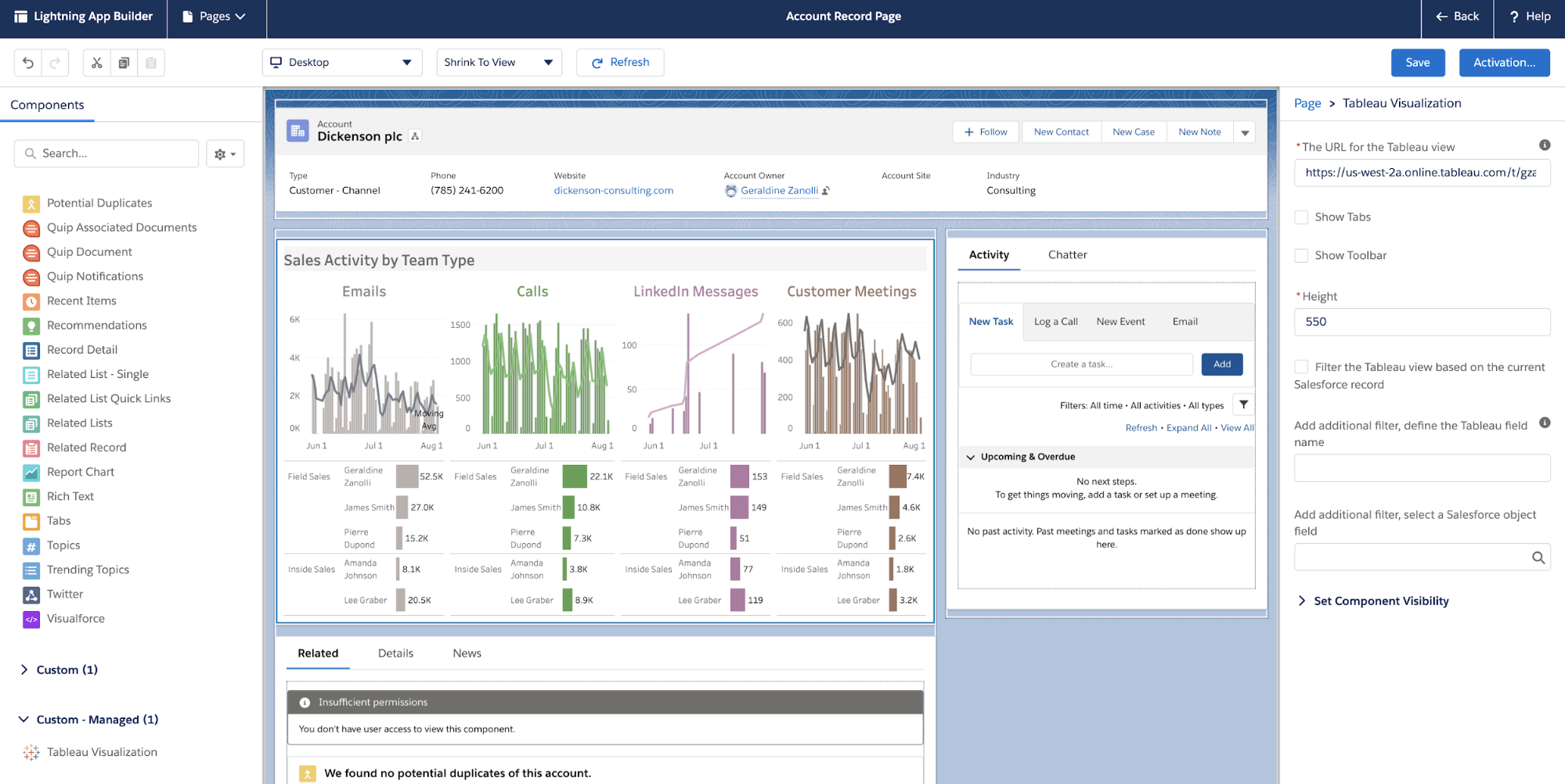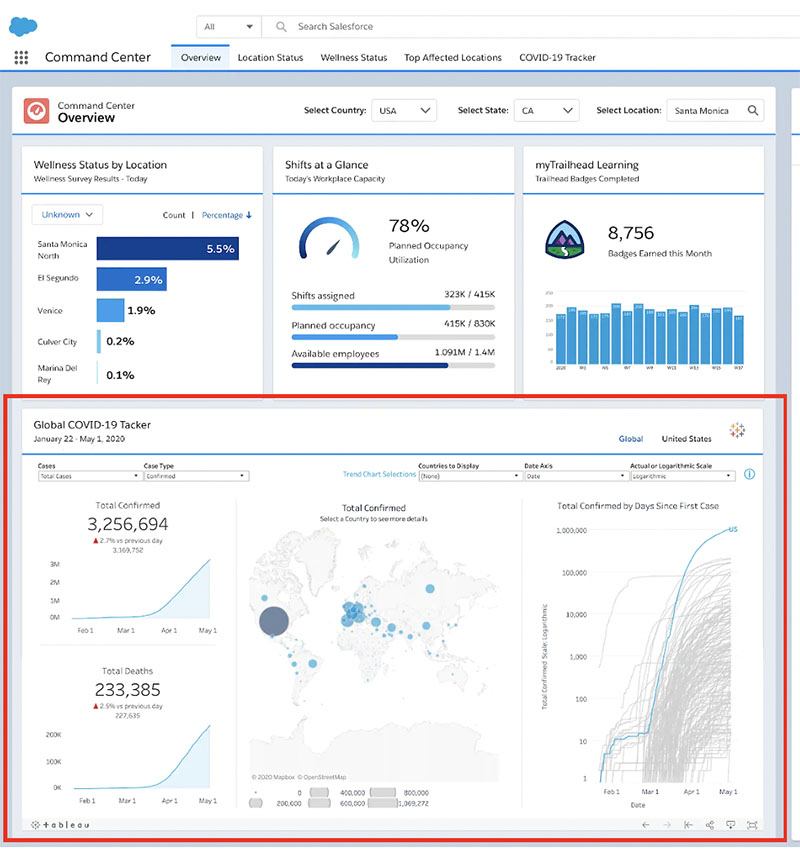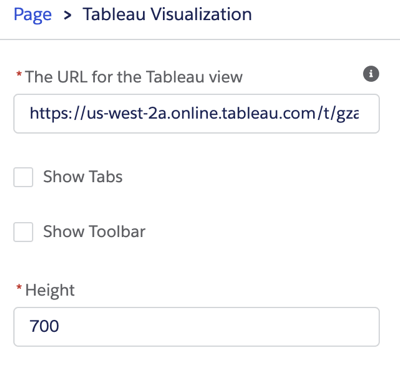Introducing a new way to bring Tableau analytics into Salesforce
At Tableau, we believe that our customers need analytics in their workflows, and Salesforce customers are no exception. While there are existing ways for our customers to embed Tableau content inside Salesforce, the new Tableau Viz Lightning web component makes it easy to integrate Tableau visualizations into Salesforce in just a few clicks.

Today, we are excited to release the Tableau Viz Lightning web component, available now on Salesforce AppExchange. By using it, any Salesforce admin or developer can integrate any Tableau dashboard into a Salesforce Lightning page.
You may have already seen the component used in Work.com, Salesforce’s offering of advisory services and technology solutions to help companies and communities safely reopen in the COVID-19 environment. The Work.com team used the Tableau Viz Lightning web component to add the Global COVID-19 Tracker dashboard to the Workplace Command Center, a single source of truth that gives organizations a 360-degree view of return-to-work readiness across all of their locations, employees, and visitors.
“Surfacing Tableau dashboards in the Command Center illustrates the power and convenience of the ‘single pane of glass,’” Xander Mitman, Director of Product Management at Salesforce shared. “Best of all, if customers want to add more Tableau dashboards—either public or proprietary—it only takes a few clicks to make those changes. The Tableau Viz Lightning web component makes it fast and easy for business technology teams to take an agile approach to figure out what makes end users most efficient and productive.”

The Work.com team used the Tableau Viz Lightning web component to add the Global COVID-19 Tracker dashboard
Easy embedding for Salesforce
Any Salesforce user can visit AppExchange and install the Tableau Viz Lightning web component in their org. With three clicks, the Lightning web component is ready to be used in Salesforce. Then, Salesforce admins can drag and drop the Lightning web component on a page. Users will need to get the URL of the visualization they want to embed from Tableau Online, Server, or Public, and then customize the look and feel by adjusting the height or showing the Tableau toolbar.

Furthermore, to keep users in their workflow, two filtering options are available on Record Pages (such as an Account or Opportunity page):
- Context filtering allows users to filter the visualization based on the record they are on at the moment.
- Advanced filtering lets users define their own filter based on the visualization they are embedding and the information on the page.
To learn more about how to configure the Tableau Viz Lightning web component, check out Embed Tableau Views in Salesforce in Help. In the same spirit of making the user experience easier, we also released new help articles on setting up single sign-on (SSO) for the Tableau Viz Lightning web component, which currently supports SAML.
For our fully native and deeply integrated analytics solution for Salesforce, check out Einstein Analytics.
Developers, build your own solution on top of the Tableau Viz Lightning web component
Each deployment of Tableau + Salesforce is different—different content, consumers, use cases, etc. We recognize that the Tableau Viz Lightning web component isn't a one-size-fits-all solution, and that is why you can access the full Lightning web component as an open-source project.
Developers can build on top of our Tableau Viz Lightning web component by embedding it in their own Lightning web component. One advantage of using composition to build a component is that developers can benefit from the improvements we make to the Tableau Viz Lightning web component without having to change their code. We released the Tableau Viz Lightning web component with one sample code available on GitHub—look for more coming soon.
Install the Tableau Viz Lightning web component from AppExchange to get Tableau inside Salesforce today!
Histórias relacionadas
Subscribe to our blog
Receba em sua caixa de entrada as atualizações mais recentes do Tableau.








